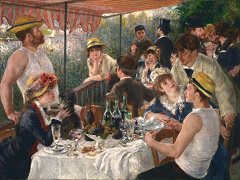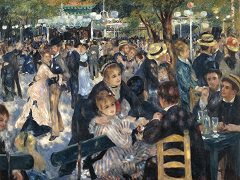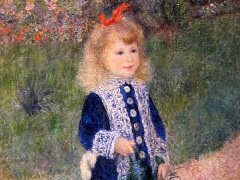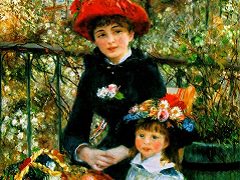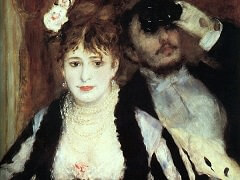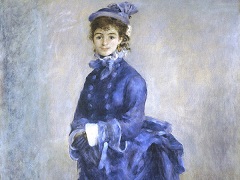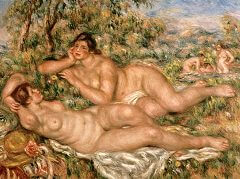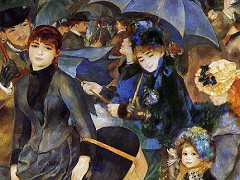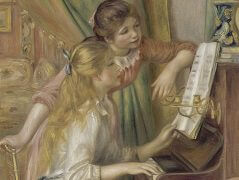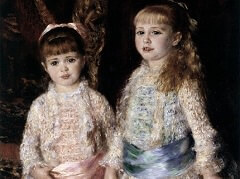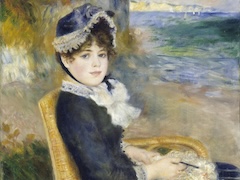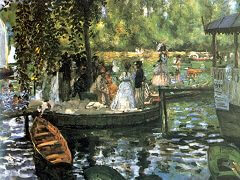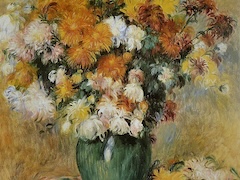Dance at Bougival - by Pierre-Auguste Renoir
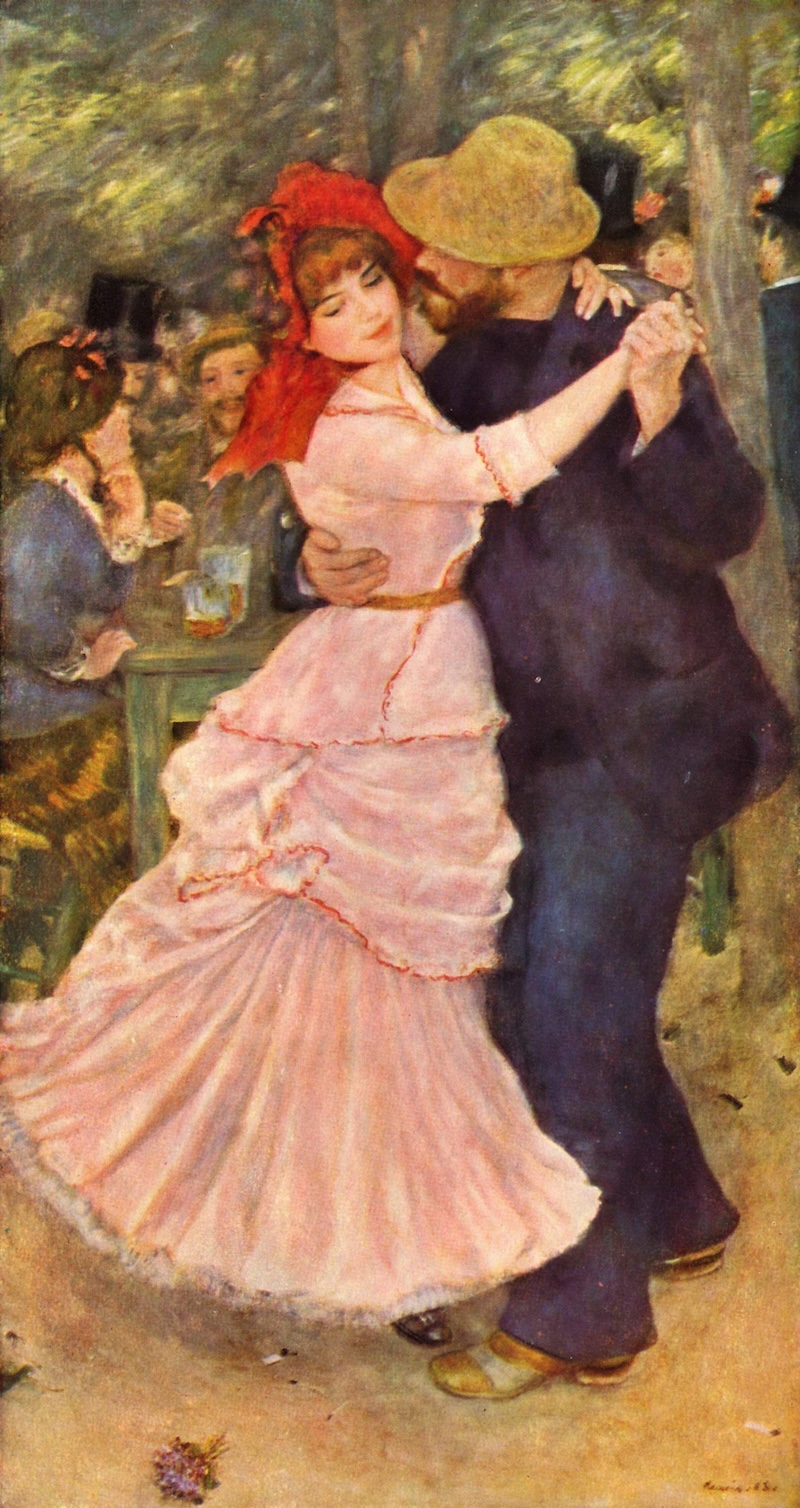
No artist has ever been more aware than Renoir of the charms of his age, and nowhere else in his work does he celebrate his joy of life more beautifully than in the Dance at Bougival. His sense of identity with the scene is wholehearted and direct. These are the people he loved, whose simple joys he shared tirelessly and uncritically.
The girl and her partner are detached from their surroundings. Their relationship to each other is tender and unabashed. Even the most casual glance reveals that the man adores the girl. We see it in the tension of his hand as he restrains himself from squeezing her fingers too tightly, and in the carefulness with which he steers her into a turn, almost clumsy with affectionate concentration. And the girl, her body arched in the poised yet yielding pattern of the dance, turns her head and looks away - shyly delighted with the pleasure she inspires in her companion and herself. Typically for Renoir, it is the woman who takes on the greater identity, as her youthful, open face is framed enticingly by her red bonnet and brown bangs. By contrast, her admirer remains anonymous. The upper portion of his face is covered by the brim of a straw hat, and the massive bulk of his body serves but to emphasize the pliancy of hers, as even the red piping on her dress abstractly reiterates the pervasive rhythms of the dance.
Dance at Bougival bears an interesting relationship with his earlier painting, Bal Du Moulin de la Galette. In fact, the dancing couple may well be an enlarged and refined version of the pair in the middle left of the previous composition, although the theme is one that attracted the artist to explore in more than one variation. Compared with the panoramic complexity of the composition of a few years before, Renoir has here turned to a concentrated focus on two figures, now enlarged to mural scale, as they loom above the spectator. The effect of their size is enhanced by the massing of the color into bold contrasts of red and yellow, pink and blue. The interior modeling, however, retains some sense of Impressionist handling and is thus consistent with the more fluid color and open textures of the rest of the painting, where a gay and sprightly crowd is engagingly but economically suggested. Three figures seated at a table to the left and fragments of a few others to the upper right suffice to conjure an atmosphere of outdoor festivity. But the chatter and music and the tinkle of glasses are distant sounds cast from the outer shell of the world where our lovers are joined to each other in the spirit of the dance.

